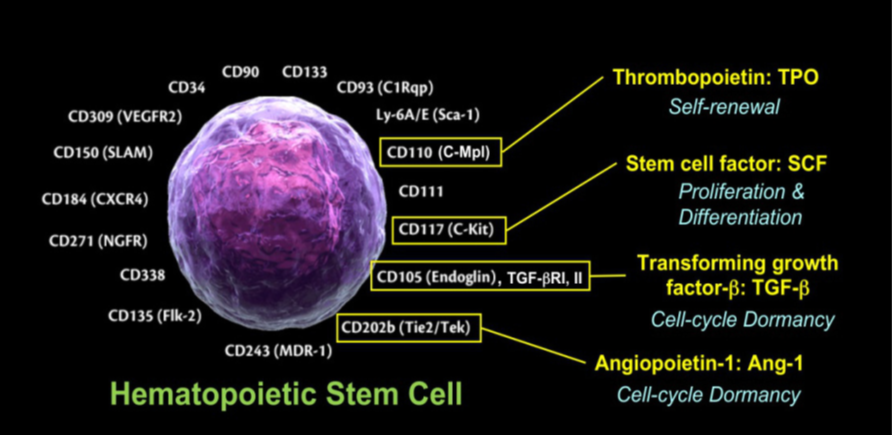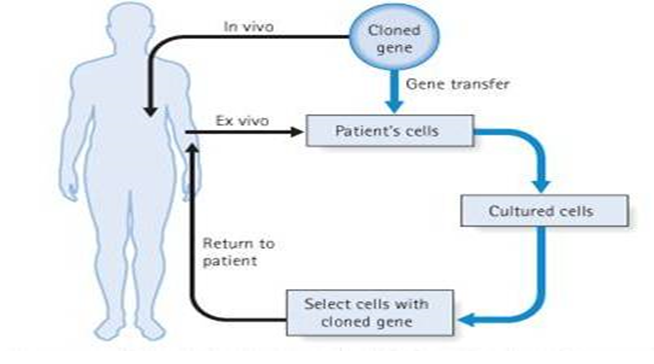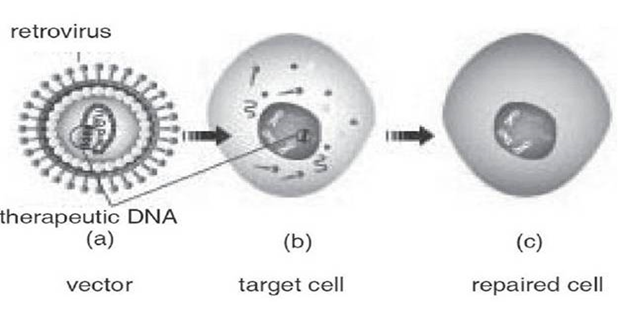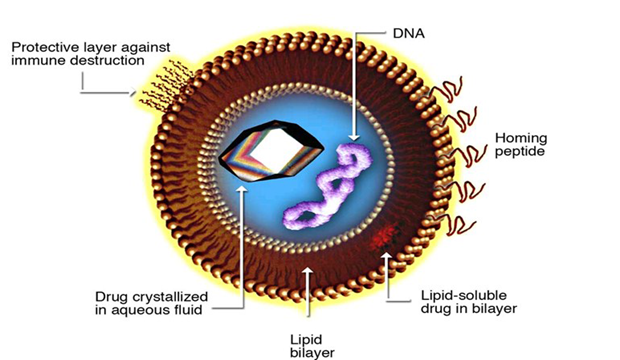Theme: Clinical Sciences 2

Title
Hematopoietic stem cells gene therapy : An overview

Background
- Genes which are carried on chromosomes are the basic physical and functional units of heredity.
- In the blood system, hematopoietic stem cells (HSCs) give rise to each of the different types of blood cells. In addition to the self-renewal and multilineage differentiation capacities of tissue stem cells, HSCs have the capability of cell-cycle dormancy, i.e. to enter a state of dormancy (G0 phase) in the cell.
- HSCs have many surface markers and typical cytokines that regulate its functions (Fig.1).

Fig. 1: HSC surface markers and typical cytokines
Summary of Work
Definition of gene therapy:
- Gene therapy, by definition, is the insertion of genes into a person’s cells with the aim of providing treatment for a particular disease.
- At a very simplistic level, gene therapy is the use of a person’s own cells to provide a therapeutic effect.
Why using stem cells for gene therapy and why HSCs in particular?
- There are many reasons why stem cells hold great potential for successful use in gene therapies. Stem cells have the ability to self-renew, which means that the need to provide repeated administrations of gene therapy can be reduced or possibly even eliminated.
- Hematopoietic stem cells are an ideal choice because they can easily be removed from the blood, bone marrow or umbilical cord.
Type of gene therapy using HSCs:

Fig. 2 : Ex vivo and In vivo gene therapy
- Curing human diseases using gene transfer into HSCs has long been a goal of scientists. This type of gene therapy is called somatic stem cell ex vivo gene therapy as the therapeutic genes are transferred into the body’s somatic cells of a patient and treated outside the body, then transported again into the body (Fig. 2).
- Gene therapy using genetically modified stem cells offers several unique advantages over direct gene transfer into the body (in vivo) and over cell therapy.
Delivery of therapeutic gene to HSCs:
- To transfer the therapeutic gene into a target stem cell, a carrier is required. Such vehicles of gene delivery are known as vectors that ferry the genetic material into patient target cell.
- The present vectors used for gene therapy are broadly classified as Viral vectors, Non-viral vectors.
Viral vectors for HSCs gene therapy:
- One of the successful gene therapy systems available today are viral vectors, such as retrovirus, adenovirus (types 2 and 5), adeno-associated virus. the viruses has been genetically altered to carry normal human DNA (Fig.3).

Fig. 3 : A retrovirus vector as a therapeutic gene carrier to the patient′s target cells
How does viral vectors for HSCs gene therapy work:
- The vector contained the therapeutic gene binds to receptors in the cell membrane of HSCs. The vector is then packed in a vesicle, which proceeds to the cell nucleus. Then the vesicle breaks down, releasing the vector near the cell nucleus, injecting its transgene into HSC nucleus (Fig. 4).

Fig. 4 : Gene therapy using a viral vector
Nonviral vectors for HSCs gene therapy:

Fig. 5 : Liposome
- These vectors rely on the natural biological process in which cells uptake (or gather) macromolecules. One approach is to use liposomes, globules of fat produced by the body and taken up by cells (Fig. 5).
- Another possible vector under development is based on dendrimer molecules.
References
[1] Pearson H. Genetics: what is a gene? Nature 2006; 441:398–401.
[2] Ramamoorth M and Aparna Narvekar A. Non Viral Vectors in Gene Therapy- An Overview. Clin Diagn Res. 2015 9(1): GE01–GE06.


 Send Email
Send Email